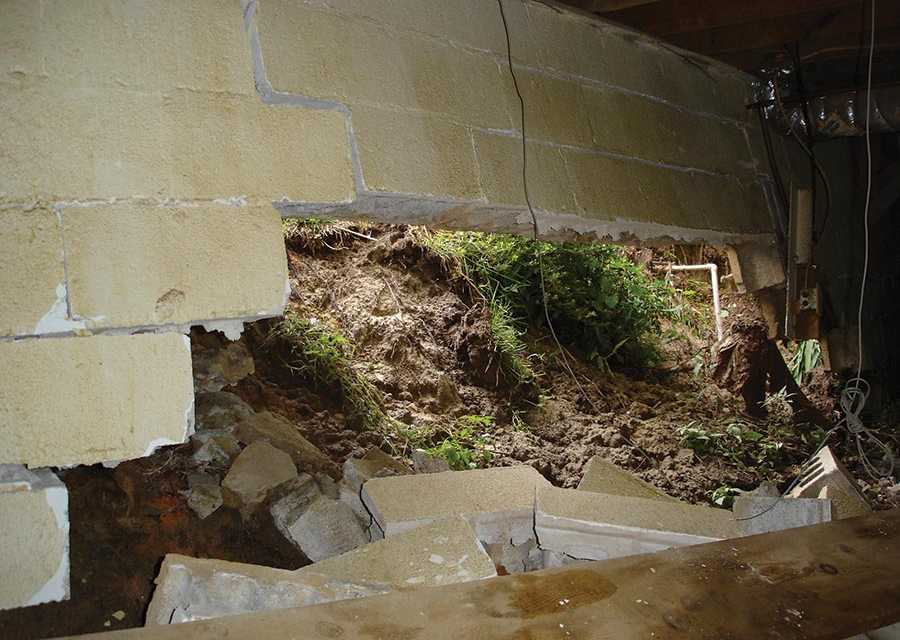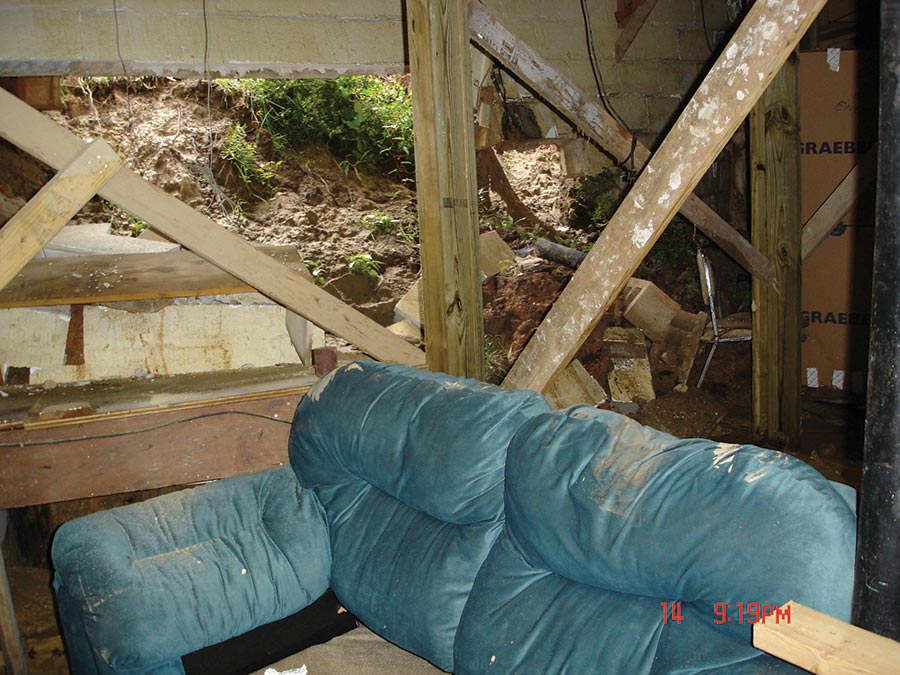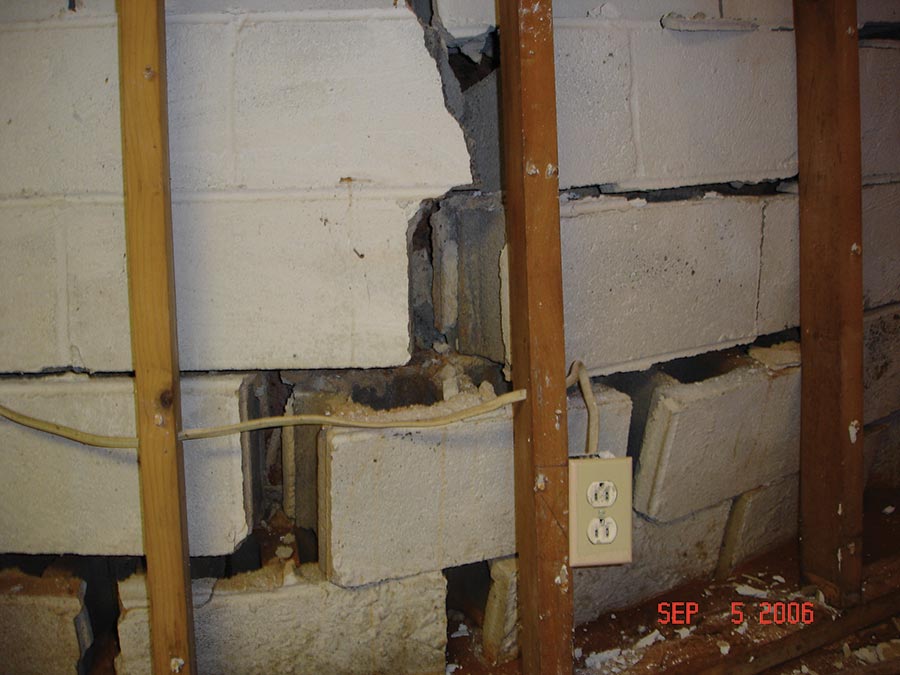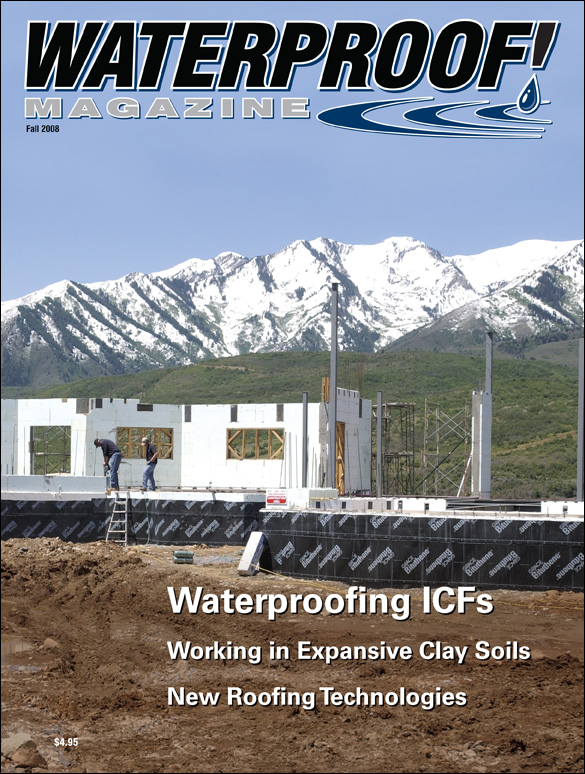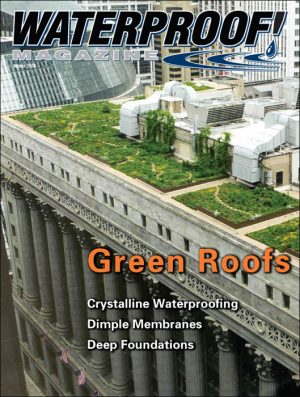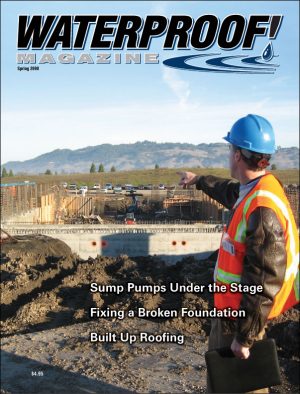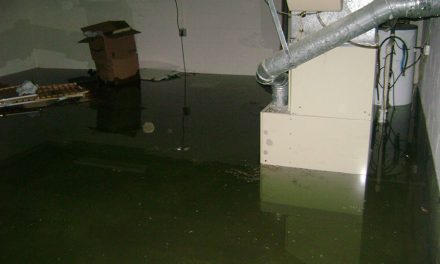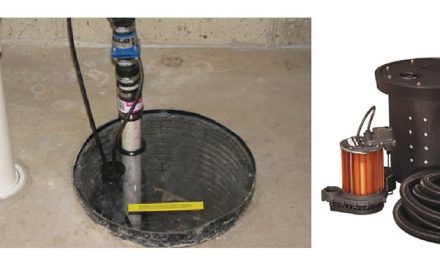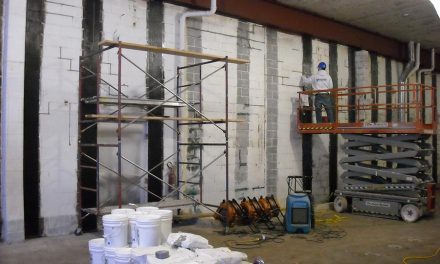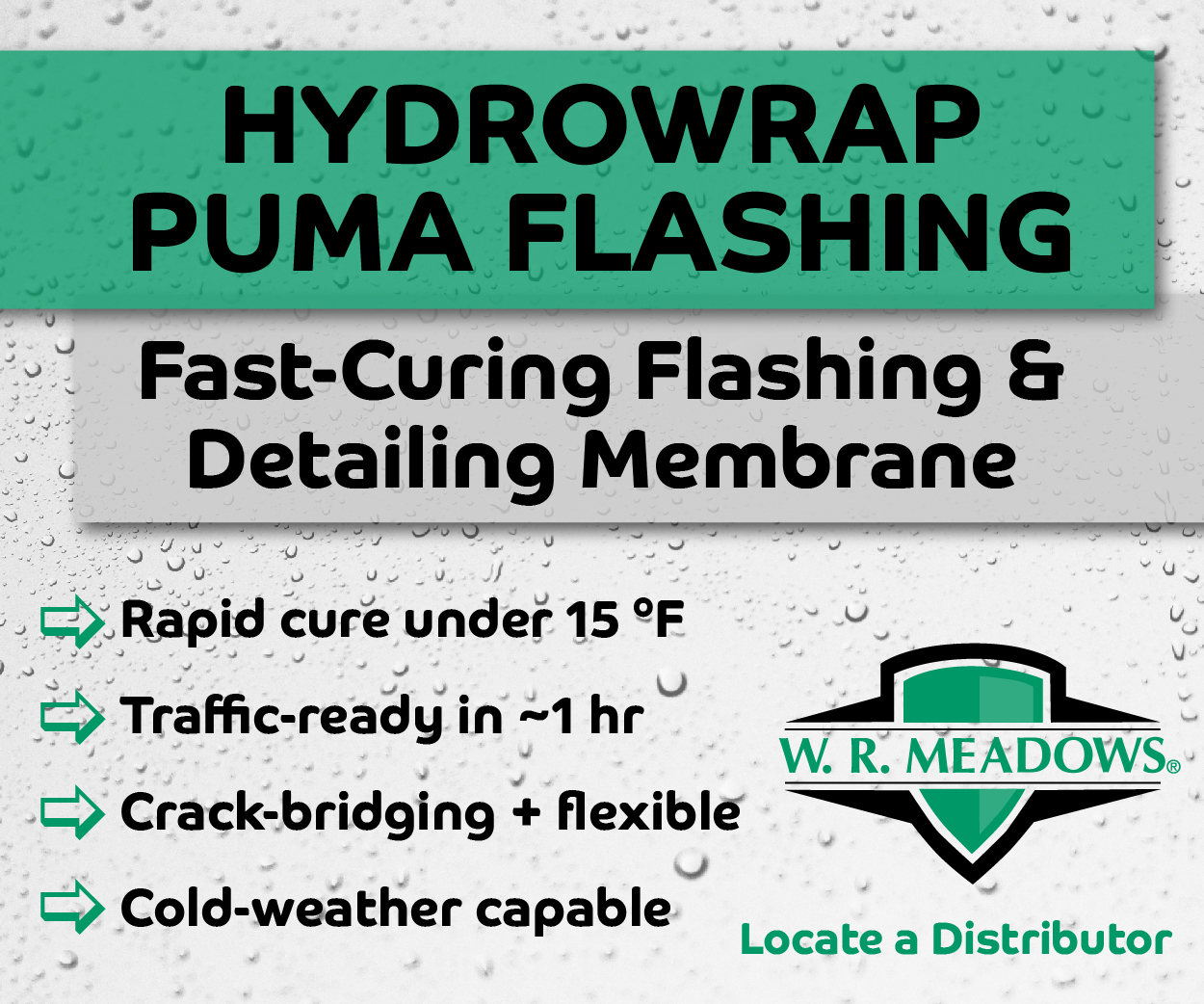By Dan Calabrese
Cave-In Catastrophe: Expansive clay soil is a deadly enemy to foundation walls, like this one, which caved in as the result of soil expanding against the structure’s foundation.
In much of America, soils don’t act in the way contractors and homeowners would prefer; they don’t stand still and behave themselves. The more clay content you find in soil, the more the soil will expand and contract as the soil takes on water and subsequently dries up.
The resulting movement may only be a few inches, but a foundation not constructed to account for such movement will be vulnerable to structural compromise and potentially catastrophic waterproofing problems.
Expansive clay soils are most prevalent in Georgia, Texas, Colorado, California and the Dakotas – but traces of it can be found in most parts of the country.
Contractors who understand the nature of expansive clay soil can take steps during the initial construction phase of a home to mitigate the clay’s likely effects. But often, they don’t. Rising construction costs and pressure to keep housing costs low can create a temptation to cut corners, and when that happens, the result can be costly remedial action down the road.
The tiny clay particles are invisible to the naked eye, but they absorb water with tremendous efficiency and expand to several times their normal size as a result. Just as efficiently as they expand, they contract when the soil dries up and the particles release the water to evaporation.
Picture the brittle, cracking remnants of a mud puddle after the sun has followed the rain and dried up the ground and you pretty much get the idea. Now picture the same cracking soil, expanding and contracting around the foundation of a house, and it’s not hard to envision three serious problems:
- Expanding soil puts pressure on a home’s foundation walls, potentially causing them to bow inward and/or crack, becoming vulnerable to water seepage.
- Contracting soil can create a gap between the foundation wall and the backfill, allowing water to run down and settle along the base of the foundation wall.
- Water that seeps in between the soil and the foundation can find its way underneath the slab, making the basement susceptible to damage from water vapor and mold.
Contractors who operate in some of the states most affected by expansive clay soils discussed the most effective steps—both proactive and reactive—for dealing with waterproofing challenges posed by such soils.
Clay soil expands in an uneven fashion, so when it expands enough to move a home’s foundation, different parts of the foundation will move in different ways. The likely result is cracking, most commonly at the corners of windows and doors, in walls, garage slabs, walkways and driveways.
Outside walls are vulnerable to movement as clay expands, and concrete slab floors can be compromised by water from rain, landscape watering or plumbing leaks.
A simple, but costly, solution is to backfill using gravel or some other non-moving soil. If the foundation walls are isolated from the movement of the soil, the problem has been solved.
Unfortunately, this is often cost-prohibitive, so many solutions involve keeping the expansive clay backfill at a constant moisture level.
Some fairly simple ways to do this include:
- Use drip irrigation to water trees and plants, thus minimizing the amount of water that is soaked into the soil. It’s also a good idea to avoid having trees and bushes within 10 feet of the house, because they tend to absorb water and dry up the soil. It also prevents roots from cracking the foundation walls.
- Install gutters and downspouts so water is deposited well away from the house. Soil around the foundation also needs to be sloped away from the house.
- Compact the soil around the foundation. “The compaction of the backfill is key,” said Troy Mardesen, vice president of Denver-based Mardesen Construction Services.
Mardesen often partners with Denver-based AAA Waterproofing on residential foundation jobs. Cathy Monarez, residential manager for AAA, said the techniques for preventing waterproofing problems are fairly straightforward, but a complication can arise from working with engineers who may not recognize that soil can be different from house to house.
“They all have their own standard drain detail that they specify,” Monarez says, “and everything we do is per the engineer’s specification.”
Monarez prefers water-based barriers from Tremco like Tuff ‘N’ Dry and Watchdog H3. “They’re environ-mentally friendly and have no solvents in them,” she said.
Mardesen adds, that he typically puts an exterior drain all around the building to ensure that water is directed away from the foundation.
In western Texas, expansive clay soils are so prevalent and difficult, that few houses are built with basements.
Tom Witherspoon is founder of S&W Foundation, a contractor in the area. He says basements can be built in expansive clay soils—if proper precautions are taken.
“We’ve seen some foundations that have been damaged by expansive clay,” he admits, “but in every case where we’ve had to repair them, it was a bad design. They didn’t have the proper waterproofing on the outside. They didn’t have the drainage and a gravel median, and it got them into trouble.
“If they’d had the correct waterproofing membranes, and had taken special care with the casting of those walls, and installed a drainage system and made sure it didn’t silt up later – with a gravel median to keep the hydrostatic pressure away from the basement, they’d have been OK. But they didn’t do that.”
Bowed walls present a particularly tricky remediation challenge, one that Witherspoon said he tries to address by making up for the original contractor’s failures.
“In most cases, where we can, we excavated on the outside and installed what should have been done in the first place,” Witherspoon said. “There are times you can’t excavate because of the adjoining construction, but wherever we can, it’s the most effective way to do it. In situations where the wall has bowed in because of all this force, we’ll go in with a carbon-reinforced barrier on the inside and apply that to the wall to keep the wall from bowing in anymore.” (See Fixing Failed Foundations in the Summer ‘08 issue of this magazine for more information.)
Often, Witherspoon finds bowed walls were constructed with non-reinforced concrete block, and a single bowed call can cost a homeowner as much as $50,000 to fix. Witherspoon says traditional repair techniques are not only expensive, but often unnecessary.
“You remove a huge quantity of dirt,” he says. “But once you’ve done that, you take the back of the wall and water-blast it clean. That’s the waterproofing route.”
The better, cheaper way? “The other route is to bore underneath the house or right behind the wall from one side to another and put in perforated pipe and drain the water out.” Witherspoon said. “The latter approach is a lot cheaper and works 99 percent of the time.”
“It depends on that area that you have to work on, and the extent of what you have to do,” Witherspoon said. “In some cases it’s just water coming through. In other cases, the walls are bowed in three or four inches. Then you not only have a waterproofing problem, you have a structural problem.”
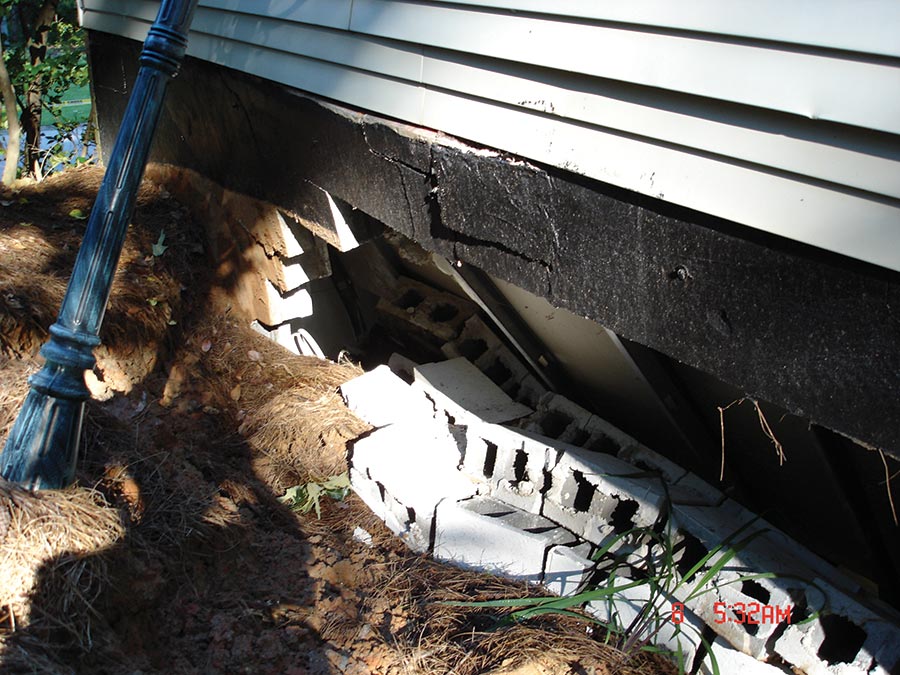
Clay soils expand when wet and shrink as they dry. This movement can destroy block foundations. Luckily, by following a few basic principles, this can be eliminated.
The bowing, of course, is caused by saturated, expanded clay. But drought conditions can be just as bad.
Fred Marshall, owner of Dallas-based Advanced Foundation Repair, said he has seen many incidents of water flowing down below the foundation and then coming up to and through basement floors.
“Typically what we’ve done is lowered the water table by putting in drains around the house to intercept the water,” Marshall said. “Once you lower the water content around the house, you typically take care of the problem.”
Atlanta is known for its red clay, and Mike Trotter, owner of Atlanta-based Trotter Co., has seen more than his share of clay-generated waterproofing problems in his 40 years in the business. His solutions usually involve stripping the basement down to the bare concrete walls and floor.
“We started this maybe 15 years ago,” Trotter said. “Before that, we would just cut the floor out and put the system in, and leave the walls finished. As far as keeping the basement from flooding, that worked fine. But it often left mold growing up inside those walls.”
Before refinishing, Trotter insists on installing a vapor barrier on exterior walls, and often installs an under-floor drainage system as well. It’s pricey, but he insists that anything less is a disservice to the customer.
The conclusion? Waterproofing systems in expansive clay soil require careful engineering and installation. Compaction, drainage, and landscaping all play a role in keeping the backfill at a constant moisture level. And that consistent moisture level is key to preventing a host of problems.
Fall 2008 Back Issue
$4.95
Waterproofing ICFs: Why it’s Important to get it Right
Waterproofing in Expansive Clay Soils
Traditional Roofing vs. New Alternatives
AVAILABLE AS A PDF DOWNLOAD ONLY
Description
Description
Waterproofing ICFs: Why it’s Important to get it Right
By David Polk
Insulating Concrete Forms are hollow foam blocks. Filled with reinforced concrete, they create a strong, and energy efficient foundation. They are also notoriously difficult to waterproof. Here’s how to do it right.
Waterproofing in Expansive Clay Soils
By Dan Calabrese
Expansive soils are strong enough to crack foundations if they get too wet or dry. Designers and builders must use specialized materials and techniques to ensure their foundations stay intact.
Traditional Roofing vs. New Alternatives
The roofing industry has changed substantially in the last decade or so. New materials have emerged, and old ones can look completely different. Here’s how they compare in price, performance, and durability.
Additional Info
Additional information
| Magazine Format | PDF Downloadable Magazine, Print Mailed Magazine |
|---|

